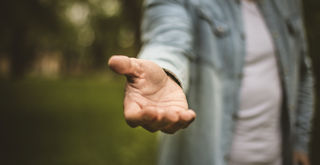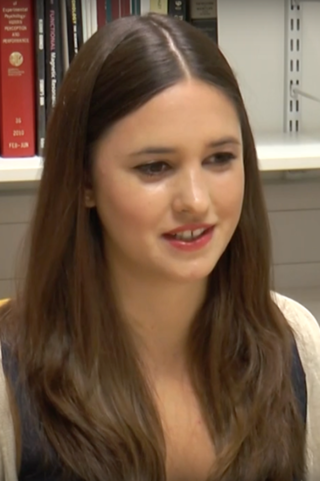Empathy
How Helpful and Generous Are We Willing to Be?
Selfishness lurks in all of us. Neuroscientists are pinning down the details.
Posted December 9, 2019

This is the first in an occasional series of posts highlighting the work of women scientists.
Do you regularly hold the door open for others? What about helping someone move? The first act doesn’t cost money or even much effort, just a few minutes of your time. The second is more demanding, the kind of helpfulness we usually reserve for good friends or relatives (though we often expect them to thank us with pizza and beer). Psychologist Patricia Lockwood, a research fellow at Oxford University, has spent the first decade of her career trying to pin down the circumstances under which we are willing to behave in a way that benefits others, or to be what scientists call prosocial. Her award-winning research has also led to some interesting discoveries about why and when we behave more selfishly. It doesn’t take much to trigger our instinct to look out for ourselves.
“What this research can show is there are lots of different factors that drive how prosocial we are,” says Lockwood, who will open a new lab at the University of Birmingham in 2020, and who won the Early Career Award from the Society of Social Neuroscience in October and the Rising Star Award from the Association for Psychological Science (APS) earlier this year. She hopes to quantify these factors in ways that might be useful in encouraging more generous behavior.

Lockwood began with an interest in empathy. Her earliest work investigated what happens in the brain when we see good or bad things happening to other people. She and her colleagues at University College London found that children with high levels of antisocial behavior and low levels of empathy exhibited different brain responses when observing someone in pain compared to people who did not have antisocial tendencies. Specifically, there was less activity in part of a brain area called the anterior cingulate cortex. In healthy people, that same brain area seemed to signal when we predict that somebody else will get a reward, but how much it did so depended on a person’s level of empathy.
To figure out how such differences in perception relate to behavior, Lockwood conducted a study that linked action and reward. Our brains encode the value of performing different actions based on the reward each action is likely to trigger. In psychology, this process is known as reinforcement learning, where we learn about the value of different actions or stimuli depending on outcomes.
First, in a study published in PNAS, Lockwood found that it was most likely that we humans have separate mental systems for learning about rewards for ourselves versus for others. One network in the brain represents reward and it does so the same way no matter who gets the reward, but the activity in a similar area in the brain that she first found in the antisocial children—a part of the anterior cingulate cortex—rises when our actions lead to reward, but ONLY when we’re helping someone else.
Second, Lockwood studied whether people would be willing to put in effort to help themselves or another person. Even if they were willing to work, would the amount of vigor they brought to the task depend on who benefitted? In the study, published in Nature Human Behaviour, “effort” equated to squeezing a device that measured grip strength. Sometimes a good hard squeeze brought credits to you and sometimes a good hard squeeze earned credits for another person. “As the effort level went up people were less and less likely to want to do it, particularly when the other person would benefit,” Lockwood says. What about when a participant chose to work to help someone else? “What we found was that people are what we call superficially prosocial,” Lockwood says. They may think they are being helpful, but they actually squeezed a little bit less, particularly at the higher effort levels. “People might be a little bit selfish,” Lockwood says. “They’re more willing to help themselves compared to others and they energize their actions [more for themselves].”
Lockwood also wondered how we develop neural representations of what we own, of what is mine and what is yours. She and her colleagues trained participants with a series of images of items that could belong to them, to their best friend or to a stranger. With repetition, participants got cues to indicate the correct owner (assigned by the researchers) of each item and had to learn who owned what. In a paper published in Nature, Lockwood reported that people were significantly faster to say correctly that pictures were theirs compared to pictures belonging to the friend or the stranger. There was also a self-bias in the speed at which they learned which object belonged to which person. They were faster to form associations between themselves and the objects they were told belonged to them than to the friend or the stranger.
Lockwood hopes that her research will be used in a variety of ways. Among other things, she’d like to return to working with antisocial kids. “One of the hardest things is to convince people that antisocial behavior is a biological phenomenon. Showing we can find brain differences is an important thing to do so people understand there is a biology behind it and it’s not, for example, necessarily the fault of the parents.”
She has also begun to study how our prosocial (or selfish) tendencies develop over the lifespan. That work isn’t published yet, but one result has shown up repeatedly: “Older people become nicer,” Lockwood says.
And finally, she says that simply understanding our own tendency to think things belong to us could be useful. “The tendency to think things are ours seems to be very strong,” she says. “It affects how the brain processes information. I think being aware of that could make people think a bit more generously.”
Copyright: Lydia Denworth, 2019.
Enjoy this post? Sign up here to get posts from Brain Waves in your inbox.
References




